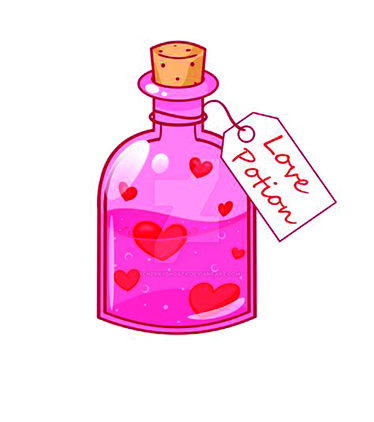“Helping You Find Plants That Work”

Historic Aphrodisiacs (Love Potions)
Enchanté, dear reader! ‘Tis the month of romance, rose petals, and breathy sighs: February!
Maybe you’re trying to figure out what candy to get for your spouse, romantic partner, or class of 30 kiddos (where the sugar high is inevitable). Or perhaps you’re looking to give or do something new or unique to/for someone who means the world to you. How about taking a page from ancient history and making a meal with ingredients fabled to make love potions? And I’m not just talking about stereotypical chocolate. Potion ingredients can range from beets to honey to vinegar (though the last one isn’t the best ingredient for a good date..vinegar isn’t exactly known for smelling minty-fresh), so you won’t be forced to go with just one option to concoct an enchanting elixir. Here are historic herbs, vegetables, and more that were considered to be the perfect love potion!
Pomegranate. In Greek Mythology, the goddess of love and beauty, Aphrodite, was thought to have been the first to plant and introduce the pomegranate tree, infusing the fruit with the power of her love and abundance. In addition, it can also take the edge off for dates, as a study found that it decreased cortisol (stress hormone) levels (Queen Margaret University in Edinburgh, 2012).
eets. Less deliciously, Romans believed beets promoted feelings of love. It was purportedly approved by Aphrodite, as she consumed the vegetable to enhance her attractiveness. While it may not directly promote feelings of romance, it is known to promote feel-good chemicals (tryptophan and betaine, and that is if you like beets), which can help boost mood on a big date (Tori Avey).
Honey. Most likely honey is the easiest to make a “potion” with (it’s a smooth move to make a cup of sweet tea on a cold night for a loved one). Honeymooning came from the concept of drinking mead (fermented honey) during and after marriage. Honey is also associated with love and romance (and endorsed by Gods) in several cultures: the Goddesses Hawthor of Egyptian mythology and Aphrodite/Venus of Greek and Roman mythology. Biologically, honey provides a boost in energy, vitamins, minerals, and even a small amount of amino acids!
Figs. Bursting with flavor, antioxidants, and copper, with a uniquely satisfying texture, these small, delectable fruits have been long associated with romance in Greek culture.
Herbs, Honey & Vinegar. Herbs, honey, and vinegar…as a facial ointment. Roman Catholics who created and used this facial ointment did so on the night of October 17. It was believed that overnight the user would dream of being with a loved one or crush, and ask St. Luke to grant this unconscious wish. It was believed that on the next day, St. Luke’s feast day on the 18th, the dream could be made a reality by the Saint himself.
Flowers. Marigolds are proclaimed to be a lucky charm for getting with a crush, so long as these colorful flowers are planted on their path in Greek culture.
From weird to tasty, these love-boosting ingredients make interesting markers of history.
Personally, I anticipate using pomegranate and honey in a recipe to make my love life and taste buds happier! Enjoy your Valentine’s Day, and may it be full of fun, love, and tasty treats!

